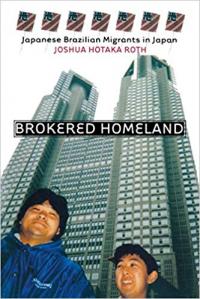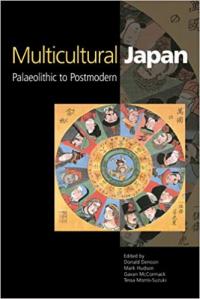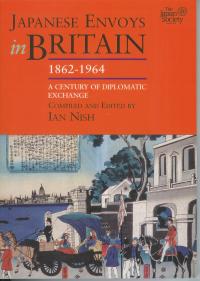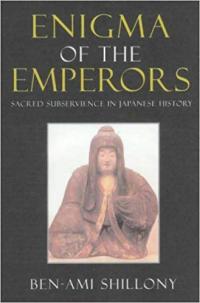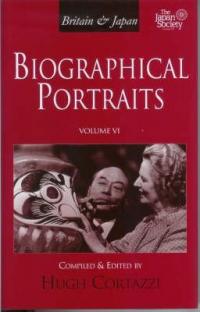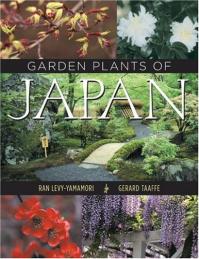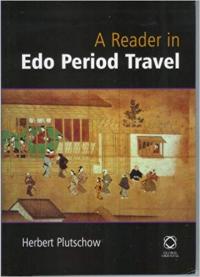The Japan Society Review
The Japan Society Review is published on a quartely basis, both online and printed (members are entitled to receive a copy by post). Since the starting of the publication in 2006, each issue covers a selection of Japan-related books and films, as well as theatre and stage productions, tv series and exhibitions. Its purpose is to inform, entertain and encourage readers to explore the works for themselves.
The Japan Society Review is possible thanks to the work of volunteers who dedicated their time and expertise to help us to promote the learning and understanding of Japanese culture and society.
Books
Brokered Homeland: Japanese Brazilian Migrants in JapanBy Joshua Hotaka Roth The interactions between Nikkeijin and natives, says Joshua Hotaka Roth, play a significant role in the emergence of an increasingly multicultural Japan. He uses the experiences of Japanese Brazilians in Japan to illuminate the racial, cultural, linguistic, and other criteria groups use to distinguish themselves from one another. Roth's analysis is enriched by on-site observations at festivals, in factories, and in community centers, as well as by interviews with workers, managers, employment brokers, and government officials. Review by Takahiro Miyao
Books
Flyboys: A True Story of CourageBy James Bradley James Bradley's #1 bestseller Flags of Our Fathers made real the humanity and legacy of war as few books had before. Now, in Flyboys, Bradley returns to World War II and an extraordinary-and totally unknown-true story of courage.Over the remote Pacific island of Chichi Jima, nine American flyers-Navy and Marine pilots sent to bomb Japanese communications towers there-were shot down. One of those nine was miraculously rescued by a U.S. Navy submarine. The others were captured by Japanese soldiers on Chichi Jima and held prisoner. Flyboys reveals for the first time ever the extraordinary story of those men. Review by Tomohiko Taniguchi
Books
Multicultural Japan: Palaeolithic to PostmodernEdited by Donald Denoon, Mark Hudson, Gavan McCormack and Tessa Morris-Suzuki This book challenges the conventional view of Japanese society as monocultural and homogenous. Unique for its historical breadth and interdisciplinary orientation, Multicultural Japan ranges from prehistory to the present, arguing that cultural diversity has always existed in Japan. A timely and provocative discussion of identity politics regarding the question of 'Japaneseness', the book traces the origins of the Japanese, examining Japan's indigenous people and the politics of archaeology, using the latter to link Japan's ancient history with contemporary debates on identity. Review by Takahiro Miyao
Books
Japanese Envoys in Britain, 1862-1964: A Century of Diplomatic ExchangeCompiled and edited by Ian Nish Commissioned by the Japan Society as the companion volume to British Envoys in Japan, 1959-1972 (2004), this collection of essays on a century of official Japanese representation in the United Kingdom completes the history of bilateral diplomatic relations up to the mid-1960s, concluding with Ambassador Ohno Katsumi’s highly successful six-year assignment in 1964. In all, twelve authors, half of whom are Japanese , contribute to the work. Review by Sean Curtin
Books
Enigma of the Emperors: Sacred Subservience in Japanese HistoryBy Ben-Ami Shillony This important new and original study on the institution of the Japanese emperors, from their mythological beginnings to the present day, focuses on the enigma of the institution itself, namely, the extraordinary continuity of the Japanese dynasty, which is unknown anywhere else in the world, yet which is now at risk on account of more recent laws of succession. The prisms through which this remarkable achievement is examined are the notions of divinity, gender and subservience. Review by Sir Hugh Cortazzi
Books
Britain and Japan: Biographical Portraits, Volume VIEdited by Sir Hugh Cortazzi This sixth volume in the Britain and Japan series contains a total of thirty-three entries, thoughtfully and painstakingly compiled and edited by Hugh Cortazzi. The volume is divided up thematically and includes an Index of Biographical Portraits published to date by the Japan Society. Review by Janet Hunter
Books
Garden Plants of JapanBy Ran Levy-Yamamori and Gerard Taaffe When the Japan Society were preparing the Garden Bequest Exhibition for Japan 2001, we were conscious of the huge number of trees, shrubs and plants which had originated in Japan and which had become so popular in Britain. We tried without success to find a book in English which covered comprehensively Japanese Garden plants. Horticulturalists and gardeners, interested in shrubs and flowers of Japanese origin, will accordingly welcome this well produced and comprehensive book. Review by Sir Hugh Cortazzi
Books
Art and Nature: Healing - Design for health in the UK and JapanBy Graham Cooper, Edited by Dennis Sharp Ted Hughes said: "Art is in general the psychological component of the immune system. As the body tries to heal itself from any stress or shock or infection, the corresponding harmonic in consciousness is art." This book not only propounds this philosophy, it also recommends action to improve health architecture in both countries, and the underlying tenet is that a patient's surroundings should make him or her better rather than worse. Review by Sandra Lawman
Books
To The Kwai - And Back; War Drawings 1939-1945By Ronald Searle In 1939, as an art student, Ronald Searle volunteered for the army. Called up in September, he embarked for Singapore in 1941, where, within a month of his arrival, he was taken as a prisoner of the Japanese. After fourteen months in a prisoner-of-war camp Ronald Searle was sent north, to work camp on the Burma Star. In May 1944 he was sent to the notorious Changi Gaol in Singapore and was one of the few British soldiers to survive imprisonment there. Throughout his captivity, despite the risk, Ronald Searle made drawings, determinded to record his experiences. He drew his fellow prisoners, and their Japanese guards and he recorded historic moments. Review by Sir Hugh Cortazzi
Books
A Reader in Edo Period TravelBy Herbert Plutschow Largely ignored hitherto by Western scholars, Plutschow's Edo Period Travel provides the first in-depth study of the subject which is centred on fifteen of the period's most notable travellers, some of whom are well known in other fields - as intellectuals, artists, poets, folklorists and natural scientists , for example - but rarely, if at all, as travellers. This important research on how the Japanese discovered their own country and cultural identity has considerable interdisciplinary appeal. Review by Sir Hugh Cortazzi


